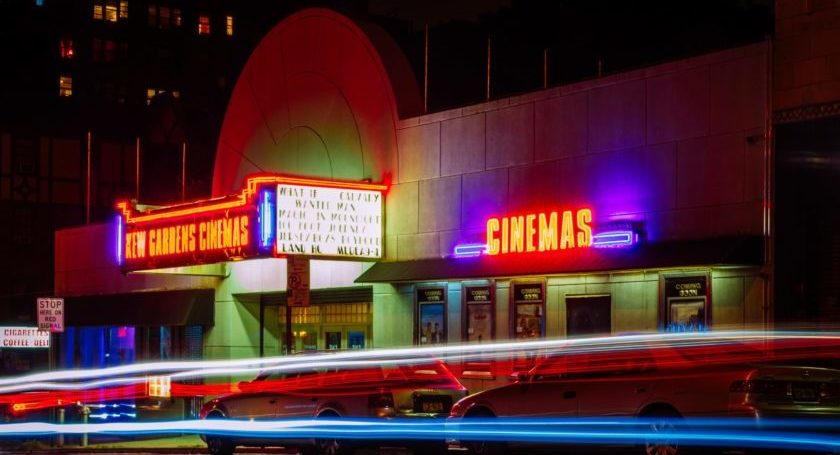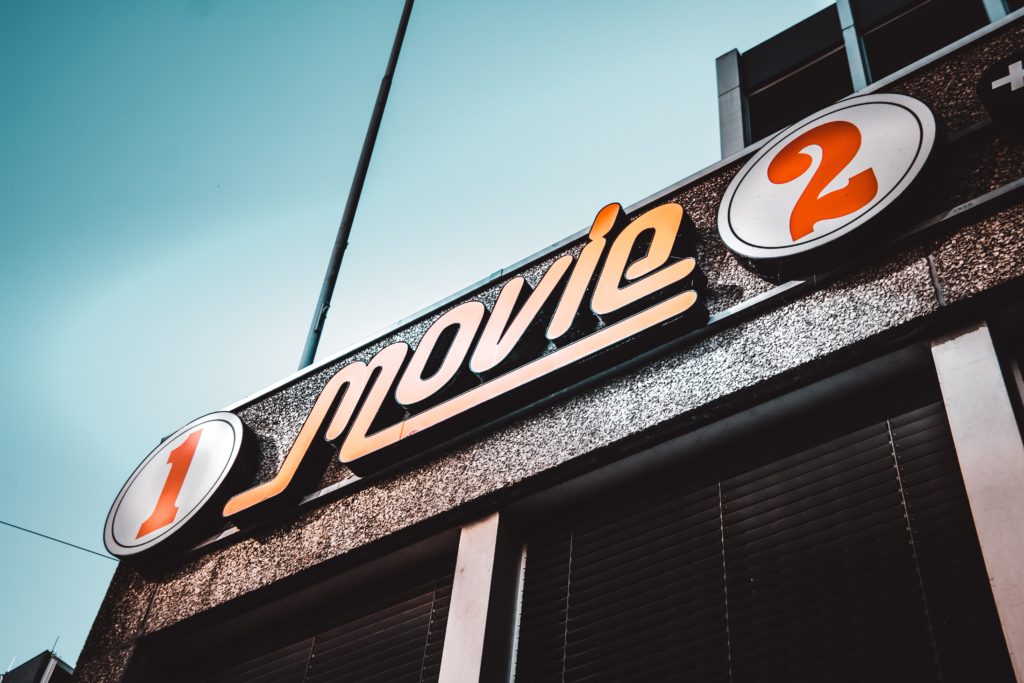M+E Daily

M&E Industry is Being Nudged into a Remake
Story Highlights
We were Zooming with an industry friend in Croatia recently and he made the passing observation that it was so good that the industry was finally getting back to normal.
Well yes, shooting has been underway for a while now in London, Toronto, Montreal, Nigeria, Kenya, Bollywood, Beijing, Shanghai and Wellington while navigating all kinds of new stuff like testing, insurance negotiation, handling crowd/intimacy scenes, craft services and crew limitations.
Universal, Focus Features, Disney, Netflix, Paramount and other studios have already signed long-term sound stage, production and post facility agreements with the new and expanded studio complex owners as projects increasingly become limited to a single location because of governmental health concerns/restrictions.
“The days of actors and crews moving from one exotic location to another to take advantage of generous tax subsidies is becoming a rarity–at least through 2021,” film industry analyst Stephen Fellows noted. “Even before the pandemic, under two-thirds of the films shoot in one country and 23 percent in two. Now, it’s different.
“The location world has shrunk dramatically,” he continued, “and producers are taking advantage of advances like real-time VFX, VR and LED walls. It adds to the project’s cost, but it also enables the producer to meet his/her production schedule. And in today’s new world, that’s critical. The new tools provide a more controlled environment, which means a more safe, secure creative space — which everyone wants and needs today.
“They also help projects meet the bonding and insurance requirements, and that’s vital”
Europe’s indie filmmakers have created an informal film/TV industry task force to help their creative industry make it through the years ahead. Since 1948, when the studio system was dismantled, content creation has been done largely by independent and small firm creatives around the globe who work on a project contract basis.
However, Thierry Breton, commissioner of EU’s Internal Market, has taken the position that the EU ecosystem is unique with local creatives who will suffer devastation at the hands of the global streamers and major international studios/content owners (Netflix, Amazon, Disney, Universal, Paramount, etc.).
What he seems to overlook (or ignore) is that to stream content in any country, the VOD services must also produce a portion of the content shown in the country (usually 30-40 percent), usually with local indies. From our perspective, this was a helluva’ added incentive for SVOD services like Netflix and Amazon because we’ve been able to watch some great shows/films from Nollywood, Bollywood, England and Germany that we might not have been able to enjoy otherwise. And we have to say the stuff is … good/great!
To get back “on schedule,” many U.S. production projects were shifted to studio facilities in other countries that permitted production to begin early — a whole lot different — but early.
Adjusting to the volumes of new production guides/limitations, U.S.-based projects have been slower at getting underway so studios/content owners can replenish the library of original content that was shifted to the OTT services when cinemas everywhere were shut down to “flatten the curve.”
 Theater Outlook
Theater Outlook
While U.S. cinema chains are closely watching what theaters in China, Europe and Asia have done and the consumer response. Customers’ temperatures are being taken, mask by cinema goers/staff are worn at all times, tickets are purchased online, separate groups of customers sit at least a meter apart and no food/drinks are allowed to be served..
That’s a major blow to the industry’s revenues because concessions have been a money maker for theater owners.
With more than 12,000 cinemas in China, IBIS World estimated that four out of 10 will close their doors permanently. The more than 10,000 screens in India, 3,000-plus European cinemas and more than 41,000 in the U.S. are facing a similar struggle.
Despite all of the added sanitation, care and reassurances, consumers in China and Europe have been reluctant to go back to the theater to be entertained.
The UNIC (International Union of Cinemas) viewed Universal’s “Trolls World Tour” as an anomaly, but it was a good anomaly — a $100 million anomaly — that gave Universal 80 percent of the gross rather than the typical theatrical split of 50 percent.
Looking at the bleak attendance projections and realistic ticket sales through the end of the year, theater owners around the globe are in “discussions,” bravely asking for past rent/service charges since the closures with a repayment at a later date as well as a dramatic reduction in rent for 12 months — or better yet, rent-based on actual admissions.
And the discussions are similar to those in China to help the surviving cinemas stay afloat and get “well.”
The rationale is that they drive traffic to shopping centers and surrounding businesses. Of course, that added traffic is also based on studios and content owners providing them with “major, major blockbusters” for an extended exclusive period.
Sounds like a helluva’ deal — everyone shares their pain and…
“It has been an unprecedented and painful time to be in the content creation and cinema industries,” said Michael Goodman, Strategy Analytics’ director of TV and media strategies.
With the summer blockbusters – “Fast 9,” “Top Gun: Maverick,” “Black Widow” — pushed to 2021 release, Christopher Nolan and Warner want his epic “Tenet” on the big screen almost regardless. Already having one opening setback, Nolan’s/Warner’s new target release dates are mid-August in Asia, late August in Europe and Labor Day in the US.
Keep in mind, this is a guy who blew up a 747 to be authentic.
Just having “Tenet” first on the big screen probably would mean he’d miss out on a few million in added revenue but he did more than alright with his last six blockbusters (“The Black Knight Rises,” “The Prestige,” “Inception,” “Memento,” “Batman Begins,” Interstellar”).
While he has often romanticized the theater experience as a vital part of social like, if the film can attract the crowds (big if), he has a crack at becoming known as the person who saved that experience.
“It’s not that Warner doesn’t have options in today’s new environment,” Goodman said. “They could do premium VOD as Universal did for ‘Trolls World Tour’ and recover most — if not all — of their $200 million or take it direct to HBO Max and view it as an invest in expanding their subscriber base but there’s also the long term investment/payback in the industry which everyone needs at this time.
“Theaters and studios can use a glimmer of hope, ‘normalcy,’” he emphasized. “’Tenet’ has provided a shot of optimism, encouraging other projects to announce release dates to get people excited about going back to the cinemas.”
When we asked him about the resurgence of drive-in theaters, he said that is probably one of the few positive things to come out of this pandemic. “Films are doing quite well at drive-ins and we’ve seen the number double across Europe and the U.S. It has become a great, safe night out for the family.”
He noted though that China’s mass box office began to slowly open at the end of July. Cinemas in “low-risk” area reopened soonest but audiences had to wear masks, have temperature checks, and eating drinking in the theater is prohibited.
“The Chinese tend to be a more compliant people, so opening there first can show that it will work even though cinemas will operate at 30 percent capacity,” Goodman said. “The slow commitment has buoyed the hopes of the studio/theatrical industries because initial ticket sales surpassed 2.8 million yuan ($400,000) the first day tickets went on sale.
“The Chinese market is huge for film production and distribution,” he added, “second only to the U.S.”
 The Audience
The Audience
Americans – regardless of age – are still uneasy about returning to the theater, though boomers are particularly concerned. Senior film fans around the world have been a boon for the box office and form the core audience for art house cinemas.
While Hollywood is obsessed with youth, older audiences spend more: According to the MPA, 41 percent of all movie tickets sold in North America were purchased by people 40 and up.
The question is when heavy moviegoer will return, if at all. Market research firm Dynata asked filmgoers in 11 territories how eager they were to get back to movies. Dynata also asked filmgoers if they would be open to safer options to enjoy the same film on the same date.
Gen Z respondents (25 and younger) said as soon as possible, over 25s said they would return relatively soon, and Boomers indicated they were in no rush.
Goodman made the point that some content is going to be more enjoyable and better seen in the living room than in the cinema.
If you are to believe Hollywood, despite repeated delays of big releases, audiences will be back at the box office next month, tickets in hand to see blockbusters such as “Tenet” and “Mulan” in the final days of summer.
Goodman said that according to reports from Morning Consult, studios will probably hold off releasing tentpole productions for three-four months, at least, until consumers are more confident in attending movies in-person.
“While it may not seem so right now, opening theaters before the potential audience is ready could be a disaster,” Goodman warned. “Theaters can’t afford to staff up, clean up, open up and then shutter.
“If that happens,” he continued, “75-plus percent of the audience won’t feel comfortable coming back…including the 60 percent who had already said they were already “uncomfortable.”
Theater chain executives are continuing to pay close attention to the status of the virus, local mandates and the availability of new content as the schedule their reopening.
The new safety measures — increased cleaning, lower capacity, lack of food/drink sales increase costs and lower revenue and profits.
Looking at their options most theater owners begrudgingly agree with “Galaxy Quest’s” Jason Nesmith, “Never give up. Never surrender.”
Andy Marken, President, Marken Communications, is an author of more than 700 articles on management, marketing, communications, industry trends in media & entertainment, consumer electronics, software and applications.









